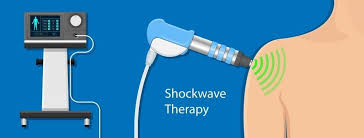Epilepsy is a neurological disorder that affects people of all ages. It causes recurring seizures, which are sudden surges of electrical activity in the brain. These seizures can look very different from person to person—some may lose awareness, while others may just feel strange sensations. Understanding the types of epilepsy is crucial for proper treatment and management, especially for patients and families navigating this journey.
This guide simplifies the various forms of epilepsy and helps you recognise the signs so you can take the right steps toward better health.
What Is Epilepsy?
Epilepsy is diagnosed when a person has two or more unprovoked seizures that are not caused by temporary triggers like fever, alcohol withdrawal, or low blood sugar. It’s a chronic condition that can impact daily life, mental health, learning, and independence—but with proper care, many people with epilepsy lead full and active lives.
Why Do Seizures Happen?
Seizures are caused by abnormal electrical signals in the brain. Depending on where in the brain this activity occurs, seizures can vary in severity, type, and duration.
Common causes of epilepsy include:
- Genetics
- Brain injury or trauma
- Stroke
- Brain infections (e.g., meningitis, encephalitis)
- Developmental disorders
- Tumors or brain malformations
Main Types of Epilepsy
Epilepsy is generally divided based on where the seizures begin in the brain:
1. Focal (Partial) Epilepsy
In this type, seizures begin in one specific area of the brain.
- Focal Aware Seizures (Simple Partial): The person is awake and aware during the seizure. They may feel unusual sensations (smells, sounds, déjà vu), muscle twitches, or experience emotions like fear or joy.
- Focal Impaired Awareness Seizures (Complex Partial): The person’s awareness is altered or lost. They may stare blankly, perform repetitive movements (like lip smacking or hand rubbing), and won’t remember the event afterwards.
Common Signs:
- Sudden fear or anxiety
- Changes in vision or hearing
- Jerking of a limb
- Loss of consciousness (partial or complete)
2. Generalised Epilepsy
These seizures affect both sides of the brain at once.
- Absence Seizures (Petit Mal): Most common in children. The person may stare blankly for a few seconds, blink rapidly, or have subtle body movements. Often mistaken for daydreaming.
- Tonic-Clonic Seizures (Grand Mal): The most dramatic type, involving sudden stiffening (tonic phase) followed by rhythmic jerking (clonic phase). The person may fall, lose consciousness, and possibly bite their tongue or lose bladder control.
- Myoclonic Seizures: Brief, shock-like jerks of a muscle or group of muscles. These are usually short and occur without warning.
- Atonic Seizures: Sudden loss of muscle tone, causing the person to collapse or drop things unexpectedly.
- Tonic Seizures: Sudden stiffness in the arms, legs, or trunk, often occurring during sleep.
- Clonic Seizures: Repeated jerking movements, typically involving both sides of the body.
3. Combined Generalised and Focal Epilepsy
Some people experience both types of seizures—focal and generalised. This is more complex and may require detailed evaluations such as EEG or MRI to pinpoint the origin.
4. Unknown Type
Sometimes, it’s hard to classify the seizures due to limited information or unusual patterns. As tests and evaluations progress, the type may become clearer.
Common Epilepsy Syndromes
Certain types of epilepsy are grouped into syndromes, often diagnosed in childhood. Each has its unique features, causes, and treatment options.
- Juvenile Myoclonic Epilepsy (JME): Appears in adolescence. Involves myoclonic jerks, usually in the morning. Often lifelong but responds well to medications.
- Lennox-Gastaut Syndrome (LGS): A severe form of epilepsy beginning in early childhood, involving multiple seizure types and developmental delays. It can be difficult to control.
- Dravet Syndrome: A rare genetic epilepsy starting in the first year of life. It’s treatment-resistant and often associated with developmental issues.
- Childhood Absence Epilepsy (CAE): Characterised by frequent absence seizures. Children may outgrow it by adolescence.
Diagnosis
To determine the type of epilepsy, doctors at NPMC may conduct:
- EEG (Electroencephalogram): Detects abnormal brain activity
- MRI/CT scans: To identify structural brain issues
- Blood tests: To check for metabolic or genetic causes
- Detailed medical history & seizure diary
Correct diagnosis is essential for effective treatment.
Treatment Options
Treatment depends on the type of epilepsy and the individual’s response. Common approaches include:
- Anti-Seizure Medications (ASMs): Most people with epilepsy achieve seizure control with the right medication.
- Surgery: For focal epilepsy where the seizure originates from one spot, surgery may be an option.
- Vagus Nerve Stimulation (VNS): A device implanted in the chest sends signals to calm seizure activity.
- Ketogenic Diet: A high-fat, low-carb diet sometimes helps children with treatment-resistant epilepsy.
- Lifestyle Modifications: Regular sleep, stress reduction, and avoiding seizure triggers (like flashing lights or skipping medications) can help prevent episodes.
Living with Epilepsy: Tips for Families
- Education is key. Understand your loved one’s type of epilepsy and medication plan.
- Create a seizure action plan. Know what to do during a seizure and when to seek emergency care.
- Encourage independence safely. Set up a safe environment while allowing as much freedom as possible.
- Be prepared. Keep emergency contacts, medical information, and seizure logs handy.
- Emotional support matters. Living with epilepsy can be isolating. Join support groups, talk to counsellors, and reassure your loved one regularly.
When to Seek Help
If you or someone you know experiences:
- Repeated or prolonged seizures
- Sudden changes in behaviour, memory, or awareness
- Injury during a seizure
- Seizures that increase in frequency or intensity
Visit a neurologist immediately. At NPMC, Dr. Gautam Arora provides expert diagnosis, personalised treatment, and compassionate care for all types of epilepsy.
Final Thoughts
Epilepsy is more than just seizures—it’s a journey that affects the entire family. Understanding the different types of epilepsy helps patients and caregivers feel empowered, not overwhelmed. With the right care, support, and lifestyle changes, living a fulfilling, seizure-managed life is possible.
For expert neurological evaluation and treatment in Delhi, trust Dr. Gautam Arora at NPMC, where compassionate care meets advanced medicine.




